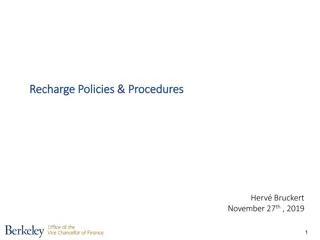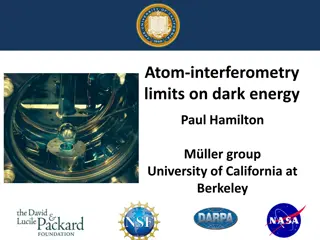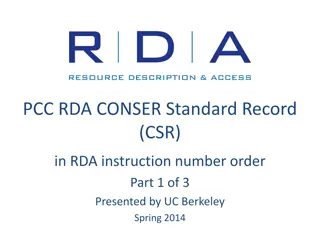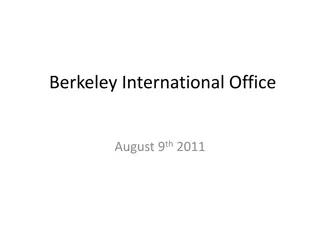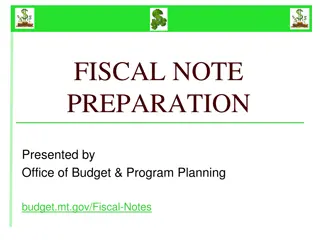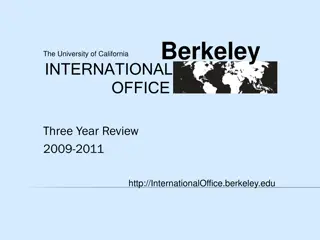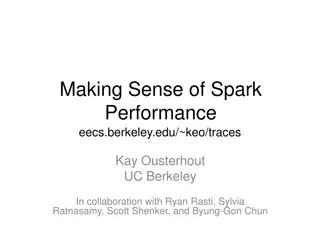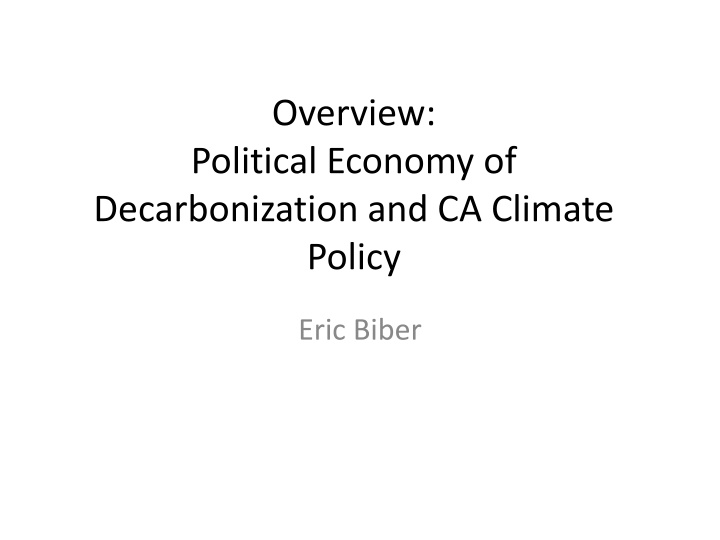
Decarbonization and CA Climate Policy Overview
Explore the political economy of decarbonization and California's climate policy, including renewable standards, motor vehicle regulations, cap-and-trade programs, and more. Learn about key research questions and global perspectives on carbon pricing schemes.
Download Presentation

Please find below an Image/Link to download the presentation.
The content on the website is provided AS IS for your information and personal use only. It may not be sold, licensed, or shared on other websites without obtaining consent from the author. If you encounter any issues during the download, it is possible that the publisher has removed the file from their server.
You are allowed to download the files provided on this website for personal or commercial use, subject to the condition that they are used lawfully. All files are the property of their respective owners.
The content on the website is provided AS IS for your information and personal use only. It may not be sold, licensed, or shared on other websites without obtaining consent from the author.
E N D
Presentation Transcript
Overview: Political Economy of Decarbonization and CA Climate Policy Eric Biber
CA Climate Policy Overall goal 40% below 1990 levels by 2030 1990 levels by 2020 Mix of policies to implement
CA Climate Policy Renewable Portfolio Standards Currently 50% by 2030 Utilities already at 24 to 25 percent, and have over 40% under contract for 2020 History: Began in 2002 with 20% by 2017, then 20% by 2010, then 33% by 2020
CA Climate Policy Motor vehicles Fuel efficiency standards reducing emissions Originally 22% reduction in per-mile emmisions by 2012 and 30% by 2016 (from 2009 baseline) New standards push for even greater reductions by 2025 Requirements that automobile manufacturers sell certain number of zero emission vehicles State tax credit for purchase of zero emission vehicles
CA Climate Policy Cap-and-trade program Began in 2013 for electricity and large industrial facilities, 2015 for fuels Reauthorized in 2017 by state legislature through 2030 Mix of free and auctioned allowances, transitioning to auctioned allowances Covers 85% of state economy
CA Example Proposition 23 in 2010 to repeal California s climate change legislation Fails by a large margin statewide Why? Interest group dynamics shaped by long history of legislation in the state.
Science Paper Reviewed policies for 54 countries and subnational entities that had adopted carbon pricing scheme by 2013 Nearly two-thirds had begun with regulatory mechanisms or subsidies Most of rest are EU entrants or have high hydro- nuclear power
Research questions Importance of energy resource base and energy sources? Importance of political structures, political parties? Importance of regulatory structure? Difference among policies? Role of geography and diffusion?



